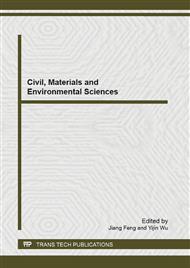p.13
p.19
p.24
p.30
p.34
p.40
p.46
p.51
p.56
Seismic Behavior of Damage-Reduction Based, Energy Dissipation Composite Shear Walls
Abstract:
A new damage-reduction based composite shear wall was proposed. It combines with three different energy dissipation units, which are the CFST column, SP deep beam and RC strip. The CFST column is set to be exposed outside or concealed inside the concrete. CFST columns and SP deep beams constitutes the core structure. During loading, RC strips between columns work with the core structure so as to reduce the damage and consume the energy. Four specimens with different design parameters, including 2 shear walls with exposed CFST columns and 2 with concealed CFST columns, were tested under horizontal cyclic loading. The load-bearing capacity, stiffness, hysteretic property, ductility, and failure characteristic of specimens have been analyzed. Results show that the deformation of this wall is just between that of the slotted shear wall and the entire shear wall. The RC strips reduce the damage and the core structure presents ductile behavior during load. The new wall is designed based on damage-reduction and it shows good seismic energy dissipation mechanics. It can be applied to the design of shear wall in high-rise buildings.
Info:
Periodical:
Pages:
34-39
Citation:
Online since:
August 2013
Authors:
Price:
Сopyright:
© 2013 Trans Tech Publications Ltd. All Rights Reserved
Share:
Citation:


